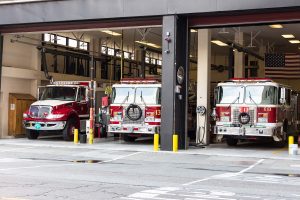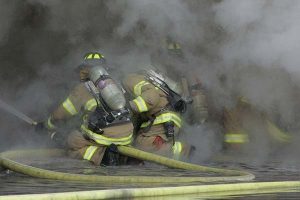Our latest Current Issues and Events article highlights findings from recent research into how station design of dormitory location and the time of day of the emergency affect turnout times.
Key finding: Time of day had the greatest impact on response times. Station design was not the main factor in turnout time.
Station design can play a very big role in turnout times, right?
Well, maybe not quite as much as previously thought.
While many research studies have emphasized that station design is a big factor with direct impact on turnout times, another recent study suggests that incident time of day is actually of much greater importance.
Daniel Scheller, Ph.D., co-author of “Fire Department Turnout Times: A Contextual Analysis1,” says that:
Recognizing the interaction of station design and the time of day of an incident is crucial to understanding turnout times.
Research takeaways
Key findings from this study on turnout times and the impact of time of day include:
- Time of day had the greatest impact on response times. Station design was not the main factor in turnout time.
- Graveyard shift response times were longer regardless of station design. Graveyard shift was defined as midnight to 6 a.m. for this study.
- Dormitories located above the apparatus garage or in a separate facility had longer response times during the graveyard shift.
- There was no significant difference in turnout times between different station designs, except during the graveyard shift where above garage dormitories had longer turnout times (10.7% longer than during the day).
- Walking downstairs or sliding down a fire pole to the apparatus garage took longer because those activities require more wakefulness than walking through a door.
This study doesn’t suggest abandoning above garage dormitories, but there may be more cost effective ways to reduce turnout times. Fire service leaders should look at special training or protocols to lessen the impact of station design.
Learn more about this research
The research article is available through our library by contacting netclrc@fema.dhs.gov. Interested readers may be able to access the article through their local library or through the publisher’s website.
1 Reglen, D., & Scheller, D. S. (2016). Fire Department Turnout Times: A Contextual Analysis. Journal of Homeland Security and Emergency Management, 13(1). doi:10.1515/jhsem-2015-0015
Link to article:



